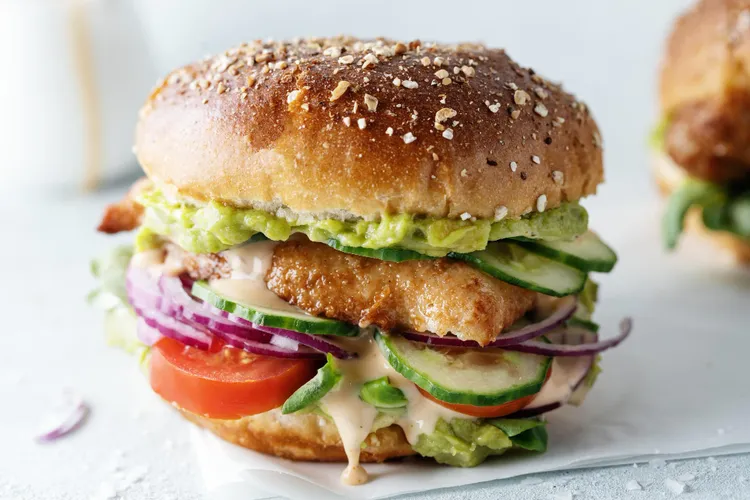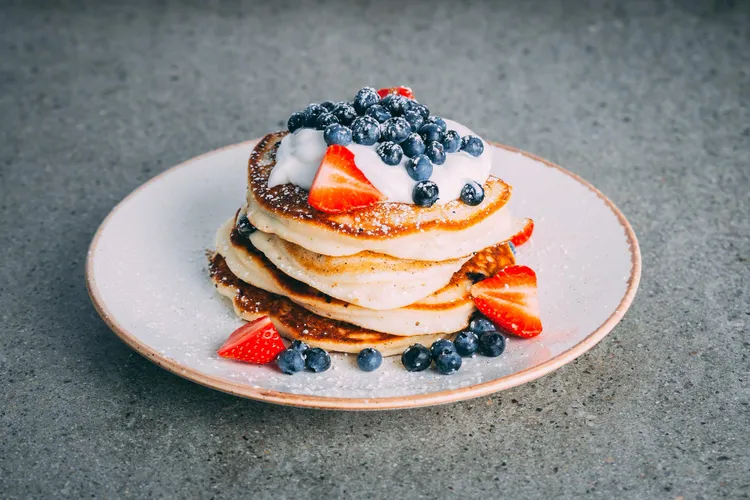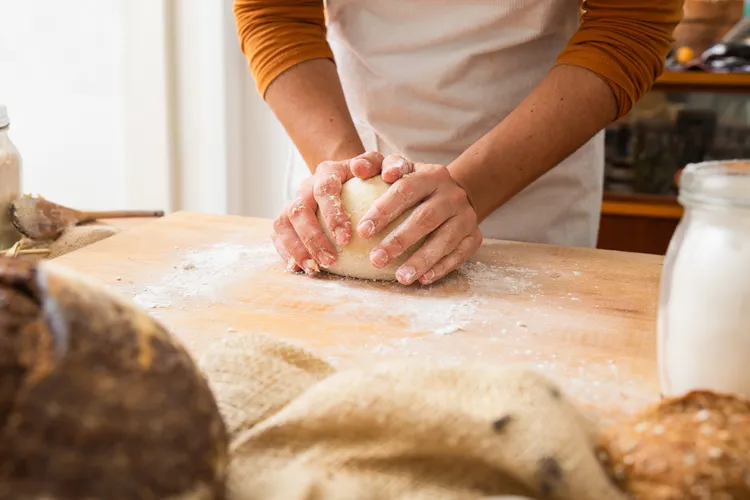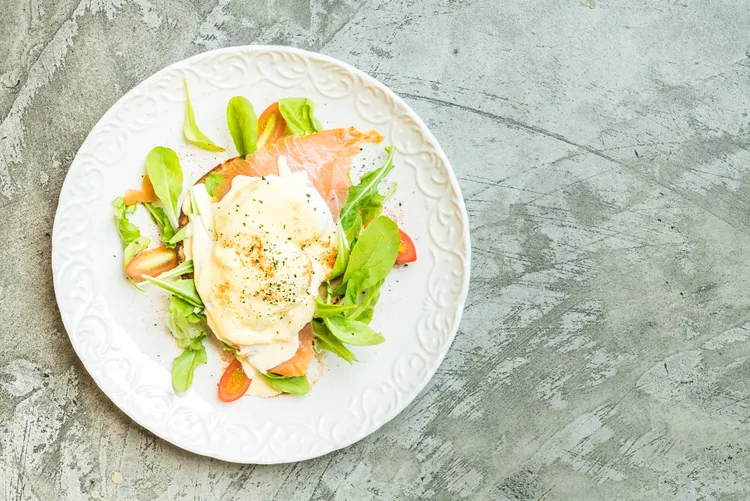Comfort Food, Reimagined: The Mindset Shift
Before getting into specific foods, it helps to shift the way you think about “healthy.” A lot of people picture health food as bland grilled chicken and steamed vegetables. No cheese, no butter, no joy. That mindset alone leads to an all-or-nothing cycle: “I’m being good” vs. “I’ve given up.”
Instead, imagine your favorite comfort dish as a base template. You’re not throwing it out - you’re editing it.
Can I keep the texture I love but change the ingredient?
Can I reduce something (like oil or sugar) without anyone noticing?
Can I add something (like fiber or protein) so it fills me up more and keeps my energy steadier?
The goal isn’t perfection. The goal is “better than before” - and still worth craving.
Mac and Cheese That Loves You Back
Mac and cheese is classic comfort: creamy, cheesy, carb-heavy, and often oily. A traditional version can be loaded with butter, whole-milk cheese, and white pasta. But you can keep the gooey, cozy factor while making it much kinder to your body.
Start with the pasta. Swapping regular white pasta for whole wheat, chickpea, or lentil pasta instantly boosts fiber and protein. The texture is slightly different, but under a rich sauce, most people barely notice - especially if you undercook it just slightly, so it stays firm.
Next, the sauce. Instead of a heavy cream-and-butter base, try this approach:
Make a simple roux with olive oil or a small amount of light butter instead of a big slab of regular butter.
Use low-fat milk or unsweetened plant milk (like soy or oat) instead of heavy cream.
Add a little less cheese than usual, but make it sharp: stronger cheeses (like extra sharp cheddar or parmesan) give more flavor per gram.
A powerful trick is to bulk up the creaminess with pureed vegetables. Steamed or roasted cauliflower, butternut squash, or carrots blend beautifully into a cheese sauce, adding natural sweetness and a silky texture. When you blend them with milk, garlic, a bit of cheese, and mustard powder, you get a sauce that feels decadent but is packed with vitamins and fiber.
Season generously. A pinch of mustard powder, garlic powder, onion powder, smoked paprika, and black pepper can make a lighter sauce taste just as rich and complex as the original. You’re not losing flavor - you’re building it in a smarter way.
Finish with a crunchy topping made from whole-grain breadcrumbs and a sprinkle of parmesan, baked just until golden. Same comfort, more nutrients, less food coma.
Fried Chicken Without the Deep-Fryer Hangover
Crispy chicken is comfort food royalty, but deep frying usually means lots of oil and calories that add up fast. The key is chasing texture and seasoning, not oil.
First, marinate your chicken in buttermilk or yogurt. This is a traditional trick for tenderness, and you don’t need full-fat versions - low-fat works well. Add spices directly to the marinade: paprika, garlic powder, onion powder, black pepper, a bit of salt, maybe some cayenne if you like heat. This step infuses the chicken with flavor from the inside out.
For the coating, instead of standard white flour, try:
Whole wheat flour,
A mix of whole wheat flour + finely crushed cornflakes, or
Panko breadcrumbs (they crisp up beautifully).
Season the coating generously. This is where many “healthy” recipes fall flat - they cut fat but forget flavor. Salt, pepper, smoked paprika, dried thyme, oregano, and a bit of cayenne or chili powder can take you a long way.
Now, instead of deep-frying, go for oven-baked or air-fried:
Preheat your oven well and use a wire rack over a baking tray so hot air can circulate around the chicken.
Lightly spray or brush the coated chicken with oil - not soaked, just enough for browning.
Bake at a high temperature so the outside crisps while the inside stays juicy.
Air fryers are particularly good at delivering that “fried” texture with minimal oil. You still get crunch, crackle, and satisfaction - just with far fewer calories and less heavy grease.
Pizza Night, Upgraded Not Cancelled
Pizza doesn’t have to be the enemy of healthy eating. In fact, a smartly made pizza can be a balanced meal: carbs, protein, healthy fats, and plenty of vegetables. The trick is control over crust, cheese, and toppings.
Start with the base. A thin crust is almost always a better choice than thick and stuffed. Go for:
Whole wheat dough,
A sourdough base, or
Even flatbreads or whole grain tortillas for ultra-thin, crispy pizzas.
Next, the sauce. Use a tomato sauce that’s just tomatoes, herbs, maybe garlic and onion - no added sugar if possible. If you make it yourself, simmer canned crushed tomatoes with garlic, basil, oregano, salt, and pepper. Tomato sauce gives you lycopene (an antioxidant), flavor, and moisture without much fat.
Cheese is where people go overboard. Instead of piling it on, use a smart combo:
A moderate amount of part-skim mozzarella for melt and stretch,
A sprinkle of parmesan for salty, savory punch,
And maybe a few dots of ricotta for creaminess.
Rather than doubling the cheese, double the toppings that do your body favors:
Colorful vegetables: bell peppers, mushrooms, onions, spinach, arugula, cherry tomatoes, zucchini, artichokes.
Lean proteins instead of processed meats: grilled chicken, turkey sausage, shrimp, beans, or even tofu.
Finish the pizza with fresh herbs (basil, parsley, oregano) and a drizzle of olive oil or chili oil after baking for fragrance and flavor. You still get that “pizza night” joy, but you’re not left feeling weighed down.
Creamy Soups and Stews Without the Heavy Cream
Comfort often comes in a bowl: think creamy tomato soup, potato chowder, or rich stews. The classic way to get a creamy texture is lots of cream and butter - but your blender can help you cheat in a much lighter way.
The first trick: use vegetable purees as your thickener. Cook your aromatics (onions, garlic, carrots, celery) in a small amount of olive oil, add your main vegetables (like tomatoes, squash, potatoes, cauliflower), and simmer with broth until very soft. Then blend part or all of the soup. You’ll get a naturally thick, velvety texture without needing a cup of cream.
For chowder-style soups, you can:
Use low-fat milk or unsweetened plant milk instead of heavy cream.
Blend a portion of the soup with some of the potatoes or beans and stir it back in to create body.
Beans are your secret weapon here. White beans (like cannellini) blend into a smooth, creamy base that’s high in fiber and protein. They don’t dominate the flavor, but they make the soup much more filling and satisfying.
For richer-tasting soups, focus on layering flavors:
Start by sautéing onions until they’re lightly browned for sweetness.
Deglaze the pan with a little wine or vinegar to add depth (most of the alcohol cooks off).
Use fresh or dried herbs like thyme, rosemary, bay leaf, or cumin depending on the style of soup.
Finish with a small swirl of olive oil, a sprinkle of grated cheese, or a spoon of yogurt instead of a large splash of cream.
You still get warmth, comfort, and that “ahhh” feeling - just with more nutrients and less heaviness.
Burgers That Hit the Spot (Without Being a Brick in Your Stomach)
A burger is more than meat - it’s the combination of juicy patty, soft bun, tangy sauce, and crunch from toppings. To make it healthier, you don’t have to abandon that experience. You just tweak each layer.
The patty:
If you love beef, choose leaner cuts (like 90-95% lean) and keep the portion reasonable. You can also mix ground beef with ground turkey, chicken, lentils, or mushrooms to reduce saturated fat while keeping the meaty feel.
Vegetables like finely chopped mushrooms, grated carrots, or zucchini can be mixed into the patty to add moisture and fiber.
Season the patty well - salt, pepper, garlic, onion powder, maybe a bit of smoked paprika or Worcestershire sauce make a big difference. A lean patty without seasoning can taste dry and flat; a lean patty that’s seasoned properly can be just as satisfying as a fattier one.
The bun:
Switch from a white bun to a whole wheat or seeded bun for more fiber.
Or choose a slightly smaller bun rather than a big, oversized one.
If you’re cutting carbs, you can use lettuce wraps or open-faced burgers (one slice of bread instead of two), but that’s optional. The key is choosing what feels sustainable for you.
Toppings are your playground. Instead of relying on cheese and mayonnaise alone, stack your burger with:
Tomato slices, crunchy lettuce, onions, pickles,
Avocado for healthy fats and creaminess,
A flavorful sauce made with Greek yogurt plus mustard, herbs, or a small amount of mayo.
Using just one slice of cheese instead of two, and choosing a sharper cheese, keeps the flavor high and the calories more reasonable. The result: a burger that still feels like a treat, but doesn’t knock you out for the rest of the day.
Desserts: Sweet Comfort Without a Sugar Crash
Comfort food isn’t just savory. Cookies, brownies, cakes, and puddings all carry emotional weight too. Making them healthier doesn’t mean turning them into diet snacks - it means being strategic about sugar, fat, and flour.
One of the simplest changes is to reduce the sugar in most recipes by about 20-30% without dramatically affecting texture. Our palates are often just used to very sweet desserts; once you dial it down a little, you usually don’t miss it.
You can also experiment with:
Replacing part of the white flour with whole wheat pastry flour or oat flour for more fiber.
Swapping some of the butter or oil for pureed ingredients like unsweetened applesauce, mashed banana, or pumpkin puree to add moisture with fewer calories.
Using dark chocolate (70% or higher) instead of milk chocolate for a richer taste and less sugar.
For creamy desserts, Greek yogurt is incredibly useful. Mixed with a little honey or maple syrup and vanilla, it becomes a tangy, creamy base for parfaits, fruit dips, or even “cheesecake-style” fillings. Pair it with fresh fruit and a crunchy topping (like lightly sweetened granola or crushed nuts) for a dessert that feels indulgent but is much more balanced.
Frozen desserts can also get an upgrade. Blended frozen bananas turn into a surprisingly creamy “nice cream” when whipped in a food processor with a splash of milk and perhaps some peanut butter or cocoa powder. You still get the cold, sweet experience of ice cream, but with fiber and fruit instead of just sugar and cream.
Salt, Sugar, Fat… and Flavor: The Real Secret
Many comfort foods rely on three main things for taste: salt, sugar, and fat. When you reduce them, things can taste “off” at first - unless you intentionally add other layers of flavor.
To keep dishes exciting, lean hard on:
Herbs and spices: garlic, onion, thyme, rosemary, basil, oregano, cumin, coriander, smoked paprika, chili flakes, curry blends - these build complexity.
Acid: a squeeze of lemon, a splash of vinegar (balsamic, apple cider, red wine), or a few pickles can brighten a dish that tastes flat.
Umami: ingredients like parmesan, soy sauce, miso, mushrooms, sun-dried tomatoes, nutritional yeast add deep savoriness that makes food feel satisfying even with less fat or salt.
If you cut 20% of the salt but add fresh herbs, a bit of acid, and a sprinkle of parmesan, your tongue might even prefer the lighter version. It’s all about balance and building flavor from multiple angles rather than relying on just one.
Portion Power: Sometimes “Healthy” Is How Much, Not Just What
Even the healthiest version of mac and cheese becomes less helpful if the portion could feed three people. A big part of making comfort food healthier is simply getting realistic about portion sizes - without turning every meal into a math problem.
A few gentle strategies:
Serve your comfort main (like lasagna or fried chicken) alongside lots of vegetables - a big salad, roasted veggies, or a veggie-based soup as a starter. That way, a smaller serving still feels like a full meal.
Use smaller plates. It sounds silly, but visually, a small plate filled up looks more satisfying than a big plate with the same amount of food.
Start by serving yourself a modest portion. If you’re genuinely still hungry 15 - 20 minutes after eating, have a bit more. Often, you’ll find you’re satisfied sooner than you thought.
This way, you keep the foods you love in your life, but in a way that respects your body’s needs and signals.
Making It a Lifestyle, Not a Phase
One of the biggest mistakes people make is treating “healthy comfort food” as a short-term project - a thing they do for a few weeks before going back to old habits. But the whole point of upgrading your go-to dishes is that you don’t have to give them up. You can eat like this long-term.
A few tips to make these changes stick:
Change one dish at a time. Maybe this month, you focus on making your mac and cheese lighter and your pizza more balanced. Next month, you tackle fried foods or desserts.
Pay attention to what you actually enjoy. Not every “healthy” tweak will be a winner for you. Maybe chickpea pasta isn’t your thing, but whole wheat is. Maybe you love yogurt-based sauces but hate certain vegetable swaps. That’s fine - adjust around your taste.
Share with others. Bring your upgraded comfort dish to a gathering and see how people respond. Often, no one even realizes it’s “healthier” unless you tell them.
Over time, your taste buds also adapt. Foods that once seemed too “light” start to taste just right, and overly greasy or overly sweet foods might even lose their appeal.
The Bottom Line: Comfort and Health Can Coexist
Comfort food isn’t the enemy. The goal isn’t to exile lasagna, burgers, or brownies from your life. It’s to reclaim them in a way that honors both your emotional comfort and your physical well-being.
By making small, thoughtful changes - whole grains instead of refined, baking instead of deep-frying, vegetables and beans sneaked into sauces and soups, bolder spices in place of excess salt and fat - you create versions of your favorite dishes that feel just as satisfying, but support your energy, mood, and health instead of working against them.
You don’t have to choose between “tastes good” and “good for you.” With a little creativity in the kitchen, your favorite comfort foods can do both. And that’s the real comfort: knowing you can enjoy what you love, not just today, but for many, many years to come.










